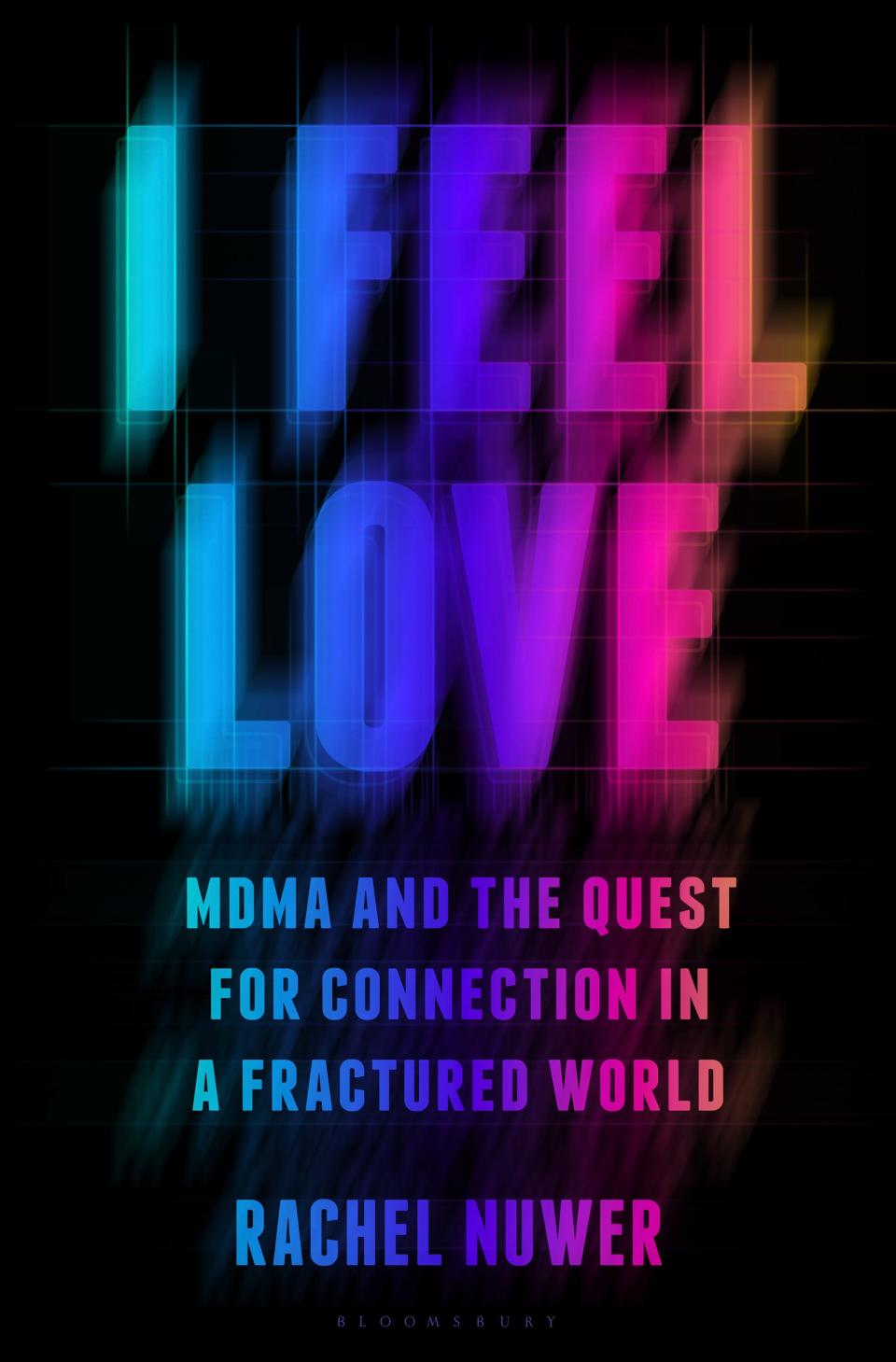-
MDMA, a schedule drug, has attracted attention for its potential use as a therapeutic drug.
-
Researchers have used it to successfully treat depression, PTSD, and more.
-
In her book “I Feel the Love,” Rachel Nuwer describes how therapy helped a veteran overcome PTSD.
Psychedelic therapy seems to have shifted from fringe experimental treatment to mainstream acceptance overnight. This is partly thanks to the many anecdotes about its success in helping treat conditions such as PTSD.
In her new book, “I Feel Love,” author Rachel Nuwer tells the story of John Reissenweber, a Vietnam veteran whose time in the service changed his personality and left him feeling isolated from everyone in his civilian life.
The following is an excerpt from Rachel Nuwer’s new book, “I Feel the Love: MDMA and the Search for Connection in a Fractured World.“
John never thought he might have any problems, and he certainly never thought he might have PTSD. “Oh, absolutely not! You’re weak to have PTSD,” he said of his past mindset.
He never applied to the VA for the benefits he was entitled to for his ruptured eardrum because “I didn’t need anyone’s help,” he said. “I didn’t need anyone to tell me I was disabled because I came back with ten fingers and ten toes, but the others didn’t.”


In 2003, John’s life changed for the better when he met his current wife, Stacy Turner. They had connected over the Internet, and when he saw her in person for the first time, he exclaimed, “God, you’re so beautiful!” yell.
“How can you not love a man who says that to you with so much warmth in his eyes?” Stacy said. “John loved me very much, and I felt that way about him, too.”
Everything was fine for about half a year, but then Stacy “started to see the cracks,” as she puts it. One fine afternoon, they were sitting on a blanket having a picnic in a wooded section of San Francisco’s Glen Canyon Park when John’s demeanor suddenly changed. He began scanning the area and became “really cold and distant,” Stacy recalled.
“Then he starts talking about strategic and vulnerable positions, where you might be worried about a conflict and where people might be hiding. I looked at him and said, ‘He’s back to fucking Vietnam.’ I uncorked the wine, gathered myself together and said, ‘We’re going home, this isn’t a good place for you.’ ‘ I said.”
Stacy loved John, but the stress and strain of tiptoeing around his anger got worse over the years. “No matter what I said or did, there was a very real chance it would be wrong, and if it was wrong, the consequences would be catastrophic,” she said.


He kicked her out twice, but they got back together each time. Finally, Stacy told John that he needed to get professional help or he would be finished. A psychiatrist diagnosed him with PTSD, but talk therapy wasn’t improving the condition. One day, his psychiatrist gave him a copy of Michael Pollan’s “How to Change Your Mind” and told him about his MAPS MDMA trials.
“I had a very strong aversion to mind-altering drugs, because I knew I was holding on pretty tight now,” John said. “I was afraid that if I did something I would be truly ruined.”
Stacy and John’s doctor convinced him to file for a hearing anyway. But when he went for a PTSD evaluation to see if he was qualified, he fell back into his old habit of downplaying his symptoms.
“Since I returned from Vietnam, I have lied to myself again, as I have done my whole life,” he said. It worked: Shortly after taking the exam, he received a polite letter stating that he did not meet the study’s criteria.
Stacy didn’t want this. He reached out to Gregory Wells, the psychologist who led the San Francisco experiments, and asked him to take a closer look at their evaluation process.
“I would understand if you fired John because of high blood pressure,” he said. “But if you kicked him out because you thought he wasn’t awful enough, you really missed the boat and he totally snowed on you.”
Stacy’s letter worked. In August 2019, John arrived at Wells’ office for his first session of MDMA-assisted therapy. “I felt a mixture of scared and determined,” he said. “I had gotten to a point where I realized maybe there was something to this, that maybe I had a little bit of PTSD. And maybe that could help.”
It didn’t take long for John to “realize something was up,” he said, as he lounged on the couch with his headphones and visor on. He felt deeply moved by the music and ungrounded in his own body. Suddenly a vision appeared in his mind.


It stood on a lunar plane surrounded by stars, reminiscent of the Apollo 10 “Earthrise” photo. There was a dark, foreboding hole in the bottom left corner that John chose to ignore.
Instead, he focused on a liquid-like blob of energy that appeared in front of him; John realized that this represented the merging of his consciousness at the moment of his birth. “Everything was nice, calm, calm,” John said. “I felt a connection to everything.”
But as a second drop appeared and fell to the ground, John heard helicopters, gunshots, and shouts; The deterioration in his soul caused by Vietnam. Although John’s therapists were “really superb,” he remained silent. “I didn’t want to talk about it with anyone,” he said. “I was doing this on my own.”
In the month after the first session, John felt more comfortable than he had in decades. She could take a walk outside and enjoy the feeling of the breeze on her skin. He could chat with Stacy and imagine what she was thinking and feeling.
John began his second session of MDMA-assisted therapy, eager to see what other gains it could bring. His mind immediately brought him back to the same lunar landscape. The terrible black pit was still there, but he only focused on the first drop and the second drop never came.
She lay on the couch all day, cuddling herself, rocking back and forth, and petting the dog one of her therapists had brought over. “I was taking care of that child myself,” he said.
After the second session, John began to remember his dreams for the first time. But a few days before his third and final session, he had a terrible nightmare: He was in military fatigues and was scared to death as the sounds of mortar explosions overwhelmed him.
Left with a feeling of dread, he entered his last MDMA session, determined to deal with the black pit in the corner. “You can’t escape this anymore,” he said to himself and jumped straight in.
He thought he would get through here — “as Pollan says in his book, ‘passing into the light,'” he explained — but he was “completely and utterly stuck.” John spent the rest of the session stuck in the pit, unable to move.
The next morning his whole body ached. When she arrived at the therapist’s office for her integration session, she was too scared to go back into the room. He knew he needed more help than limited clinical research could provide, so he found a new therapist.


With his guidance, he realized that the black hole represented the anger and pain he had felt since Vietnam. This revelation allowed him to re-examine his life, pulling out his memories one by one, like a series of file cards that he could rearrange into a coherent whole.
Although MDMA-assisted therapy alone did not cure John, “it was like an electric shock to the system,” he said. This revealed her pain and fears, and more importantly, showed her that she had the right to feel that way.
“It was like a complete and total rebirth,” he said. “It gave me the ability to look at myself and say: ‘You know, you don’t have to be perfect, you don’t have to be right, it’s okay to be you.’ Without it, I could have had all the cognitive behavioral therapy in the world and nothing would have happened.”


John continued traditional therapy and also became involved with the VA, where he connected with other veterans. In October 2021, he began volunteering with a VA program aimed at rehabilitating veterans through golf.
He said he no longer feels like he’s “running 100 percent” all the time and isn’t thrown into turmoil by the small, inevitable obstacles that daily life throws his way. Most importantly, he was able to establish a deeper bond with Stacy, whom he calls his guardian angel.
“I can talk to Stacy,” he said. “I’m not afraid to do this anymore.”
I Feel the Love: MDMA and the Search for Connection in a Fractured World is out now from Bloomsbury Publishing. Copyright © 2023 by Rachel Nuwer. All rights reserved.
Read the original article on Business Insider